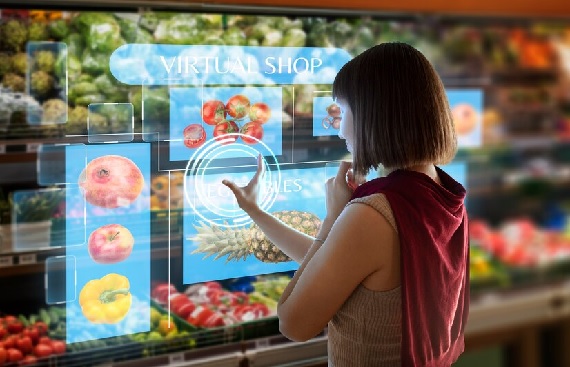Are Frozen Foods the Future of Nutrient-Rich Intakes?

In the past few years, India has seen a remarkable development in its frozen food market, providing consumers with a various selection of choices. This growth has been fueled by changes in lifestyles, globalization, enhanced availability through retail channels, and advancements in conserving cold storage. Although challenges such as worries about freshness perception and price sensitivity exist, upcoming trends advise a shift to healthier choices, the growing popularity of online shopping, sustainability efforts, and technological expansions. Overall, the future looks bright for India's frozen food industry, driven by growing consumer preferences and continuous revolution.
Freezing is an ancient yet very effective mode of food protection, prominent for its capacity to maintain taste, texture, and nutritional value better than any additional technique. By halting microbial development and reducing chemical reactions, freezing ensures the long-term quality of agricultural products. It exceeds canning and dehydration in retaining sensory qualities and nutritious properties. The process involves lowering temperatures to -18°C or below, effectively extending shelf life. Despite competition from minimal processing technologies, freezing remains the most satisfactory for quality preservation during storage.
The frozen food market is thriving globally. In developing countries, freezing presents economic feasibility and technical convenience, albeit with challenges such as high capital investment and infrastructure requirements. Changing consumer behaviors, notably the rise of working women and smaller family sizes, have fueled the demand for frozen foods. Moreover, advancements like microwave ovens have further propelled the industry, expanding product variety and flexibility. So, the frozen food industry is always growing and changing to meet people's needs.
Frozen Food Industry
The frozen food industry has undertaken a significant revolution, with frozen products achieving popularity due to their suitability and freshness. From classics like matar paneer to quick starters like chicken nuggets, frozen foods provide to different tastes. Important roots trace back to Clarence Birdseye's quick-freezing method in the 1920s, changing into today's thriving industry. With a projected development of USD 385.04 Billion by 2028, the sector is driven by factors like busy lifestyles and online purchasing trends. Despite misconceptions about freshness, technological developments ensure quality and nutrition. Industry leaders emphasized innovation, health trends, and technological progress to meet evolving consumer needs, making events like Inter FoodTech pivotal in shaping the industry's future.
From Technological Advancements to Economic Growth
In the current world, frozen fruits and vegetables play a vital role in the food market, having been influenced by the newest technological expansions in freezing systems. The advance of the frozen vegetable industry has been spurred by recent advancements in blanching processing techniques, resulting in widespread retail distribution. Today, frozen vegetables constitute a significant portion of global frozen food consumption. The frozen food industry, deeply rooted in science and technology, faces future growth influenced by economic and technological factors.
Population growth drives the need for large-scale food production, necessitating advanced equipment for continuous processing. Affordability is key, with technological developments focusing on enhancing freezing methods while reducing costs. Meeting increasing demand requires continuous improvement in process techniques and product quality, necessitating the exploration of new technologies and understanding of factors impacting frozen food quality. Innovations in convenient food forms and greater awareness of nutritional value will further fuel industry expansion.
Advancements in Frozen Food Preservation
In the past or ready-to-eat meals are heavily reliant on preservatives and additives. Currently, they are preferred due to their convenience. Thanks to research in nutrition and wellness, numerous methods have surfaced which can preserve food in a healthy fashion, these methods are increasingly adopted globally. Among these methods are various techniques such as...
- Blanching, a key initial step in frozen food preservation deactivates enzymes and yeasts that cause spoilage, thus preserving vitamins and minerals.
- Retorting technology, widely used in the food industry, thermally processes low acidic foods in sealed containers to extend shelf life and ensure commercial sterilization.
- Maintaining frozen foods at or below zero Fahrenheit sustains micronutrients and prevents freezer burn, preserving more nutrients than freshly cooked foods.
- Vacuum packaging, utilizing machines and sealers, removes air to extend storage time for refrigerated, frozen, and dried foods, inhibiting spoilage bacteria growth and maintaining freshness.
- Adhering to recommended storage or expiry dates for frozen foods ensures high nutrient retention and safe consumption, upholding quality standards.
Frozen and ready-to-eat foods have evolved into healthy, safe, and convenient options for modern households. Innovations in preservation techniques cater to diverse dietary preferences. The industry is expected to continue flourishing in the years to come.
Frozen Food Innovation
According to recent reports and technological advancements, Bigbasket has joined forces with renowned Chef Sanjeev Kapoor to introduce a new frozen foods brand, Precia. Experimented and tested by Chef Kapoor, Precia employs individual quick freezing (IQF) technology to preserve the genuine taste of foods.
IQF technology rapidly freezes products at extremely low temperatures, ensuring they retain their distinctiveness. Bigbasket highlighted that this groundbreaking method contrasts with conventional techniques, which often result in clumping or diminished quality. By maintaining the original texture, color, taste, and nutritional value of every single food item, Precia sets a new benchmark for food preservation.
The ‘Indian Frozen Foods Market Report’ by ResearchAndMarkets.com dives deep into the frozen foods market in India. It predicts a big jump in the market size, from INR 167.3 billion in 2023 to INR 561.6 billion by 2032. This growth is because more people are moving to cities, making more money, and the infrastructure for keeping foods frozen is getting better. People living fast-paced lives in cities are buying more convenient foods, especially frozen veggies snacks. Big companies like McCain India Pvt Limited are facing more competition from new players.
In essence, frozen foods signify not just convenience but also a fusion of science, technology, and culinary capability, poised to performance an increasingly essential role in current food culture. With continuous revolution and consumer education, the frozen food industry is placed for sustained growth and continued relevance in the years to come.

